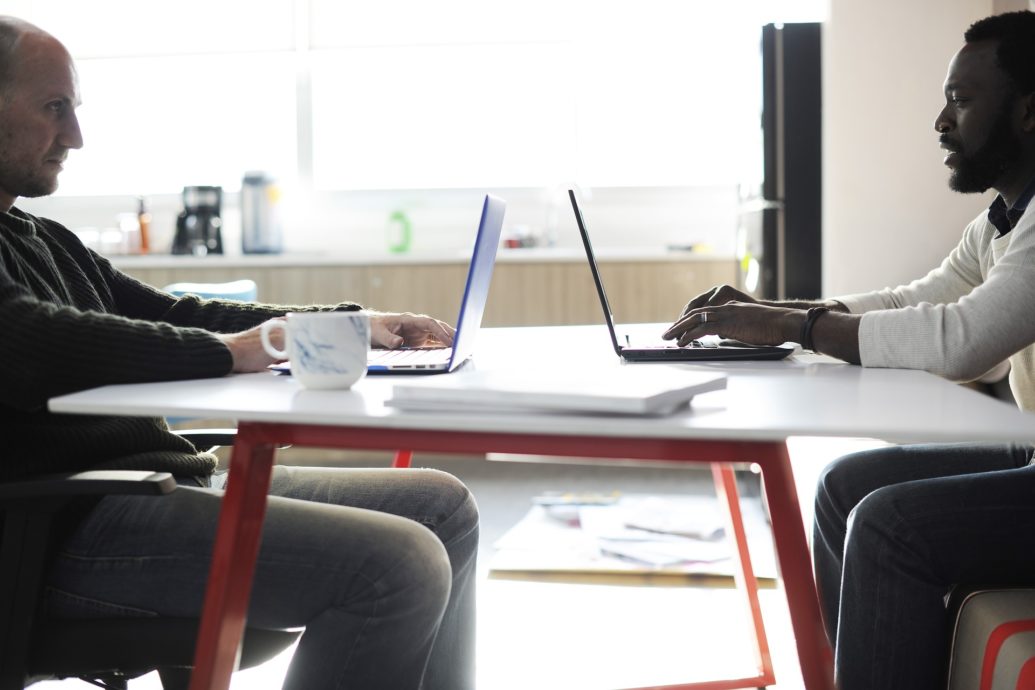Did you know that sending employees to coworking spaces is a trend? Part of what I do as the owner of a local, independent coworking space is think about how coworking functions, who might benefit from it, and how members benefit from working together. So from the beginning, I’ve asked, “Can local employees gain anything from coworking?” and “Can the other members of a coworking space gain anything from working next to people with regular jobs?”
Local Employees at Coworking Spaces: Pure Economics?
Pure economics: that’s what I used to think it was all about.
Coworking desks tend to be less expensive than desks at company offices, so some employers use them to lower costs. It’s easy to see how coworking spaces might be able to handle the overflow when companies are upsizing their workspace, as well. And if a coworking space is below capacity, a group of new members with a single, dependable source of payment can boost the bottom line. So, hosting local employees at a coworking space makes economic sense – but does it benefit anyone except the employer and the owner of the coworking space? I was thinking:
- Employees already have a local office away from home
- They already have a work-based social group
- They probably won’t need or be able to offer marketing support or referrals
- They are probably not in a position to hire, work for or work with their independent colleagues
That’s why I haven’t really pushed to bring local employees into MinorOak.
How Can Local Employees Benefit from Coworking?
Clearly, individual employees might benefit from a creative, productive atmosphere and appreciate getting away from the office every so often. Having a second, more eclectic workgroup might be fun, too.
That’s all well and good, but is there more to it? Recently, a MinorOak member who’s a business consultant brought in a few people from a client company up the road…
Our member, who specialises in workplace psychology, pulled a sales team out of their trendy open plan office, which they share with the rest of their company. He put them into our trendy, open plan coworking space for a couple of weeks. The difference? MinorOak has a quiet work area, a meeting room and two phone pods. The marketing team worked together with the consultant in the collaborative area, used the meeting room when they needed group privacy, and used the pods individually to practice their technique on sales calls.
The sales team had been having trouble focusing on calls and felt self-conscious pitching to prospects in their noisy, open plan office. In our coworking space, they felt freer, more focused, and more creative, and they were able to perfect their skills without inquiring ears. We learned a few things from talking with them about the work they were doing, as well.
As it turned out, employees can be part of a flexible workgroup – the kind of group this coworking space was designed to accommodate.
How Can Coworking Spaces Benefit from Hosting Local Employees?

This one is a little trickier. How do coworking spaces benefit from hosting refugees from the local workhouses (ha, ha)? Wellllllllll… maybe my mistake was in stereotyping companies big enough to have offices as inert, self-contained entities — and thinking their employees’ presence wouldn’t benefit their independent coworkers. The fact is, many neighbouring businesses in Nottingham’s Creative Quarter, Hockley and Lace Market are small and agile. They DO hire freelancers and consultants, they are creative, and they often have things to teach us.
Independent workers can benefit from the layers of expertise and experience within larger organisations. Many companies have a level of professionalism in their operations that loose workgroups and one (wo)man bands can only dream of, and their employees tend to be knowledgeable specialists. Most of us enter self-employment with one or two areas of expertise and learn everything else as we go – those specialists can be valuable resources.
Now, I can envision all kinds of situations where a coworking space provides more than just a desk for people from local companies – and they have more to offer than just a membership fee.
- Vertical workgroups on team projects can spend a day or more working together in the same space. For example:
- architect, engineer, project manager
- social media marketer, graphic designer, copywriter
- contractor, bid manager, bid writer
- developer, tech writer, illustrator
- event planner, client, venue representative
- writer, editor, publisher
- Companies can use our meeting room for interviews and other HR meetings.
- Single-specialisation people from different companies can have joint workdays, for example, bookkeepers, salespeople or editors.
- Teams spread across different departments in the same organisation can sit next to each other and work on a shared project.
And of course, we can also offer temporary accommodation when offices are overpopulated or when employees need a change of scene. Please get in touch through our contact form if you’d like to bring one or more members of your team to MinorOak Coworking.

